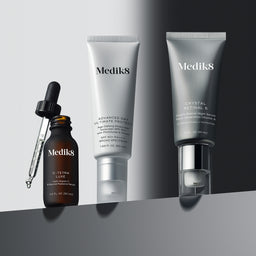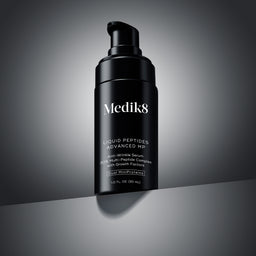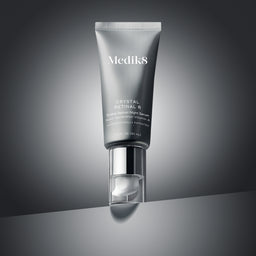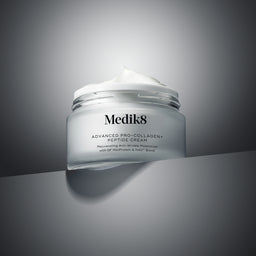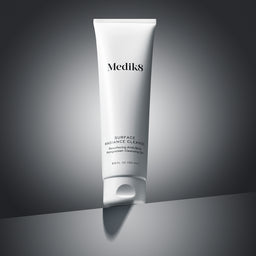The products and order you choose should reflect your skin’s unique biology and how it responds to environmental stressors, active ingredients, and hydration levels. This guide explores essential skincare steps across different skin types and we’ll highlight how to layer products in a way that works with your skin. Whether you’re starting fresh or fine-tuning your existing facial skincare routine, these tailored skin care steps can help you build something that’s effective, enjoyable, and easy to stick with.
Understanding Your Skin Type
The first step to building the best skin care routine is learning how your skin behaves. Everyone’s skin has different needs, and those needs can shift with the seasons, environment, and even stress levels. By identifying your skin type, you’ll be able to choose products and skin care steps that actually support your skin, rather than overwhelm it.
There are four main skin types: dry, oily, sensitive, and blemish-prone. Each requires a slightly different approach when it comes to selecting ingredients and layering your skincare routine. Below, we’ll break down the most effective skincare steps for each type so you can customize your daily routine with more intention.
Dry Skin Care Steps
Dry skin often feels tight, rough or flaky, especially after cleansing. It may also show signs of dehydration, such as fine lines or a dull appearance. If this sounds familiar, a hydration-focused routine can help restore balance by supporting the skin’s barrier and attracting moisture where it’s needed most.
The key to caring for dry skin is choosing products that add moisture at every step. That means using formulas that are rich in emollients and humectants, while avoiding anything that strips or irritates the surface. A gentle approach, built around skin-friendly ingredients, can make all the difference.
Step-by-Step Dry Skin Routine:
- Start with a hydrating cleanser that’s sulfate-free
- Apply a toner or essence designed to boost moisture retention
- Use a serum with hyaluronic acid to draw in water and plump the skin
- Follow with a ceramide-rich moisturizer to support the skin barrier
- Finish with a nourishing SPF to protect and lock in hydration
These skin care routine steps help build a stronger foundation for dry skin by reinforcing its natural defenses and minimizing moisture loss. With consistent use, your facial skincare routine can become a source of comfort rather than stress.
Oily Skin Management
Oily skin tends to feel greasy by midday, with visible shine across the forehead, nose and chin. Pores may appear enlarged, and breakouts can be more common if oil builds up and mixes with dead skin cells. The goal isn’t to remove all oil, but to balance it with the right skin care steps.
A well-designed routine can help regulate excess sebum without disrupting the skin’s natural equilibrium. Look for lightweight textures and ingredients that support clarity while keeping the skin hydrated.
Step-by-Step Oily Skin Routine:
- Begin with a gel or foaming cleanser to lift away buildup
- Apply a toner with balancing ingredients such as niacinamide
- Use a serum with clarifying actives like salicylic acid
- Follow with a lightweight moisturizer that absorbs quickly
- Finish with a broad-spectrum SPF that controls shine
Following these skincare steps consistently can help reduce the appearance of oil and support a more refined, balanced complexion. A good skincare routine for oily skin should feel fresh and breathable, not heavy or drying.
Skincare Steps for Sensitive Skin
Sensitive skin often reacts to ingredients, weather changes or even friction with redness, stinging or visible irritation. It may also feel uncomfortable or tight after cleansing. A calm, steady approach is key when creating the best skin care routine for this skin type.
The focus should be on soothing and strengthening the skin barrier while avoiding known triggers. Every product in your routine should support skin resilience without overwhelming it.
Step-by-Step Sensitive Skin Routine:
- Cleanse with a gentle, fragrance-free formula that respects the skin’s surface
- Follow with a calming toner or thermal water mist to comfort and hydrate
- Apply a serum with barrier-supporting ingredients like Centella Asiatica or peptides
- Use a moisturizer designed to soothe and help reinforce the skin barrier
- Protect with a mineral-based sunscreen with SPF 30+
These skin care routine steps help minimize irritation and keep the skin feeling stable throughout the day. With the right facial routine, sensitive skin can become more resilient and less reactive over time.
Acne-Prone Skin Care
Acne-prone skin is often a result of excess oil, clogged pores, and surface bacteria. It can show up as blackheads, whiteheads or inflamed blemishes and may be triggered by stress, hormones or product buildup. The right skincare steps can help manage breakouts without over-drying or irritating the skin.
A gentle yet active approach works best. Focus on formulas that help clear congestion while supporting the skin’s overall health. Avoid routines that strip the skin or rely on harsh ingredients, as these can compromise the skin barrier and make breakouts worse.
Step-by-Step Acne-Prone Skin Routine:
- Cleanse with a formula that contains salicylic acid or benzoyl peroxide to help unclog pores
- Apply a clarifying toner with ingredients like BHA to refine the skin
- Use a targeted serum with niacinamide or tea tree to help calm and reduce blemishes
- Follow with a lightweight moisturizer that supports hydration without clogging pores
- Finish with a non-comedogenic sunscreen with SPF 30+
With consistency, these skin care routine steps can support clearer-looking skin and reduce the frequency of breakouts. A skincare routine designed for acne-prone skin should feel balanced and leave the skin feeling calm, not stripped.
Targeted Treatments and Products
Once your basic skincare routine is in place, targeted products can help refine your results. These treatments are designed to address specific concerns, from visible fine lines and dullness to uneven texture or congestion. The key is to introduce them thoughtfully and always with your skin type in mind.
Knowing how to layer these treatments within your skincare steps is just as important as choosing the right ones. Below, we’ve outlined how each category works and where it fits within your daily or weekly skin care routine.
Serums
Serums are concentrated formulas designed to deliver active ingredients deep into the skin. They’re typically lightweight in texture and tailored to specific needs, whether that’s hydration, brightening, calming or clarifying. Because of their potency, serums are often applied after cleansing and toning but before moisturizer.
Adding a serum into your skincare steps can help enhance visible results and support your skin’s long-term health. Choose one that aligns with your current concerns, and give it time to integrate into your routine.
Moisturizers
Moisturizers help keep skin hydrated and comfortable by supporting its natural barrier. They work by sealing in moisture, softening the surface and helping to protect against environmental stress. No matter your skin type, this step is essential in any skincare regimen.
The best skin care routine includes a moisturizer that suits your texture preference and skin needs. Gel formulas may feel lighter on oily skin, while richer creams offer added comfort for drier types. Some moisturizers also include ingredients that help soothe sensitivity or reduce visible redness.
Cleansers
Cleansers are the foundation of any effective routine. They remove makeup, sunscreen, pollution and buildup without disrupting the skin’s natural balance. Choosing the right cleanser is one of the most important skincare steps, as it sets the stage for everything that follows.
Look for a formula that respects your skin type. Hydrating cleansers are ideal for dry or sensitive skin, while gel or foam textures can feel more comfortable on oily or blemish-prone skin. The goal is to cleanse thoroughly while keeping skin calm and ready for your next step.
Exfoliators & Toners
Toners and exfoliators help refine the skin’s surface and improve the absorption of your other products. While toners are often used daily to rebalance and hydrate, exfoliators are typically used a few times a week to help lift away dead skin cells and reveal a fresher-looking complexion.
Integrating these into your skincare steps can support smoother texture, clearer pores and more even tone. For daily use, opt for a gentle, alcohol-free toner. For exfoliation, look for well-tolerated acids like mandelic or polyhydroxy acids that complement your skin type and condition.
Eye Care
The skin around the eyes is thinner and more delicate than the rest of the face, which means it often shows signs of fatigue, dryness or fine lines first. Eye creams and serums are specially formulated to support this area without overwhelming it.
Incorporating eye care into your daily skin care steps can help maintain a refreshed, well-rested appearance. Choose a formula that addresses your main concern, whether that’s puffiness, dryness or visible lines. Apply gently using your ring finger to avoid tugging at the skin.
Masks
Masks offer a concentrated way to treat specific skin concerns, whether it’s boosting hydration, calming sensitivity or refining texture. They are designed to complement your existing skincare routine by delivering a more intensive experience a few times a week.
When choosing a mask, consider what your skin needs that day. Hydrating masks work well after sun exposure or during dry weather, while clarifying masks can help when skin feels congested. Adding this step to your skin care routine allows you to respond to changes in your skin with more flexibility.
SPF Moisturizers
Daily sun protection is one of the most important skincare steps for maintaining healthy-looking skin. SPF moisturizers combine hydration with broad-spectrum protection, helping to defend against UV exposure while keeping skin comfortable throughout the day.
Including an SPF in your morning face skincare routine is essential, regardless of the weather or season. Look for a formula that suits your skin type and sits well under makeup if you wear it. A consistent approach to sun protection supports the long-term benefits of every other step in your routine.
← Older Post Newer Post →
